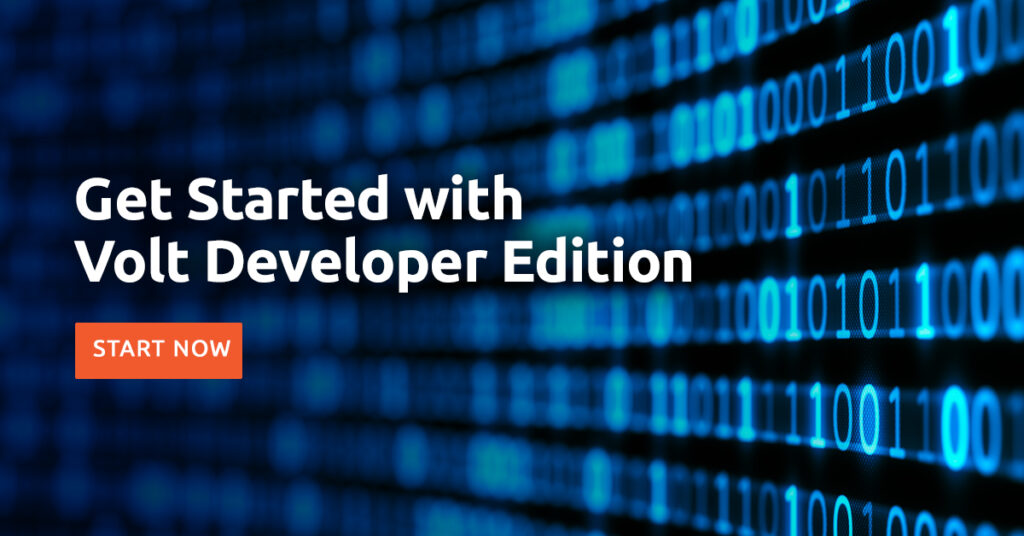Introduction
NoSQL databases and data platforms have gained widespread adoption over the past decade, offering flexible schema design, horizontal scalability, and fast data ingestion.
While NoSQL databases are an unquestioned market success, they are not a silver bullet. Businesses handling mission-critical, high-velocity data are finding that they need more than just a pure NoSQL solution—they require a system that combines scalability, consistency, and real-time analytics.
While scalability is generally a ‘given’ with NoSQL, consistency and real-time analytics are either implemented as afterthoughts or possibly not at all. This is where Volt Active Data comes in, addressing the shortcomings of NoSQL while enabling real-time intelligent decision-making.
Read on to learn about the limitations and shortcomings of NoSQL data platforms and how Volt fills those gaps.
When and How NoSQL Falls Short
Table Of Contents
- 1. Lack of Immediate Consistency
- 2. Poor Support for ACID Transactions
- 3. Limited Real-Time Processing Capabilities
- 4. Costly Scalability
- 5. Complex Multi-Model Needs
- Strong Consistency Without Compromise
- ACID Compliance for High-Velocity Data
- Built-in Real-Time Processing
- Scalability Without Performance Bottlenecks
- Unified Data Model for Modern Workloads
1. Lack of Immediate Consistency
Most NoSQL databases prioritize availability and partition tolerance over consistency, following the CAP theorem. This approach, often implemented through eventual consistency, works for certain use cases like social media feeds but falls short for real-time applications such as financial transactions, fraud detection, and IoT event processing.
Initially, NoSQL database companies promoted the concept of ‘eventual consistency’ – ie, “sooner or later, all the numbers will tie, we promise!”. But in any use case where time is of the essence and the application needs correct answers now, eventual consistency isn’t going to be enough.
What you need is “immediate” consistency, which means that as soon as a transaction is committed, all subsequent reads reflect that change—there’s no window where outdated or stale data might be returned, and there is no lag between writing data and being able to read it everywhere in the system.
2. Poor Support for ACID Transactions
ACID (Atomicity, Consistency, Isolation, Durability) transactions ensure data integrity, especially in environments that require multiple operations to succeed as a single unit. Many NoSQL solutions sacrifice ACID compliance in favor of performance, which can lead to data corruption, partial updates, and complex application logic to enforce consistency. This is clearly a problem, which is why vendors are now retrofitting ACID, with varying degrees of success, but never without complication.
3. Limited Real-Time Processing Capabilities
While NoSQL databases excel at handling large-scale data ingestion, they often lack the ability to process and analyze this data in real time. So your data platform may be able to load millions of records a second but will struggle to process them, especially if it’s trying to calculate aggregates and running totals.
Many NoSQL-based data platforms require external processing engines, which introduce latency and increase architectural complexity. Businesses relying on real-time analytics for fraud detection, personalization, or network optimization cannot afford these delays. A lot of emerging use cases assume and depend on immediate access to the ‘big picture’
4. Costly Scalability
NoSQL databases are designed for horizontal scalability, making them ideal for massive datasets. However, scaling often comes at the cost of query performance. Many NoSQL databases lack efficient indexing and support for complex queries, forcing organizations to denormalize data and create workarounds that lead to inefficiencies and increased storage costs.
But there’s another key point here: SQL. NoSQL originally meant “No SQL” to emphasize the departure from traditional relational databases, but over time, the definition evolved to “not only SQL” to indicate that NoSQL databases can support alternative data models while sometimes incorporating SQL-like querying.
While SQL is of limited use for “CRUD” (create, read, update, and delete) operations, it really comes into its own when you need to issue complex queries that depend on all the numbers involved being consistent. As with ACID, many NoSQL vendors have gone from claiming SQL would not be needed to retrofitting it, frequently with mixed results.
5. Complex Multi-Model Needs
Modern applications require more than just key-value or document storage. Businesses often need a combination of relational and document data models. NoSQL’s biggest strength – total flexibility – is also its biggest liability. In addition to the problems you see developing over time as schemas change, you also have situations where the structural guarantees offered by an RDBMS suddenly become valuable, such as when a given record has one, and only one, date field.
How Volt Active Data Addresses NoSQL’s Shortcomings
Strong Consistency Without Compromise
Volt is designed to provide high availability without sacrificing consistency. Unlike NoSQL solutions, it ensures strict serializability, allowing organizations to process transactions safely and reliably, making it ideal for financial services, telecommunications, and IoT applications.
ACID Compliance for High-Velocity Data
Volt has a special architecture that delivers full ACID compliance without the performance trade-offs seen in traditional databases. This allows businesses to execute complex, high-speed transactions without risking data integrity, making it an excellent choice for industries requiring real-time operational decisions.
Built-in Real-Time Processing
With native support for real-time event processing, Volt Active Data eliminates the need for external analytics engines. Businesses can process and analyze incoming data streams instantly, enabling use cases like fraud prevention, customer personalization, and real-time billing without added complexity.
Scalability Without Performance Bottlenecks
Volt scales horizontally while maintaining high-speed transactional performance. Unlike traditional NoSQL solutions, Volt enables efficient querying, indexing, and in-memory processing, allowing businesses to scale dynamically without compromising on speed.
Unified Data Model for Modern Workloads
Volt Active Data offers a hybrid approach that integrates transactional, analytical, and streaming workloads within a single platform. By supporting SQL queries, Volt eliminates the need for multiple database technologies, reducing architectural complexity and operational overhead.
Conclusion
NoSQL databases provide essential capabilities for modern data-driven applications, but they fall short when strong consistency, real-time processing, and high-performance transactions are required. Volt Active Data bridges this gap by offering a scalable, ACID-compliant, real-time data platform that meets the needs of mission-critical applications.
If your business relies on real-time decision-making, NoSQL alone isn’t enough. Volt Active Data empowers you to process, analyze, and act on data in milliseconds—without trade-offs. Explore Volt Active Data today and future-proof your data infrastructure.




